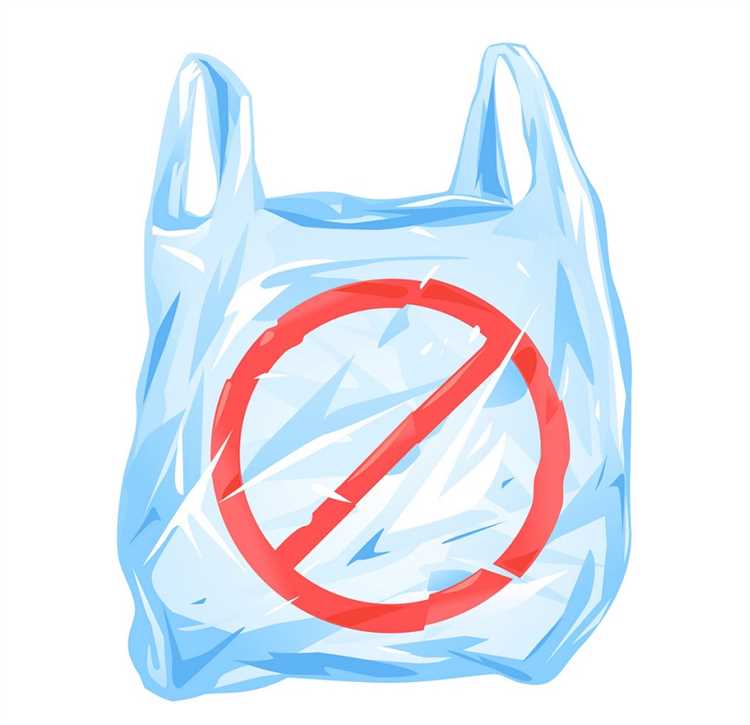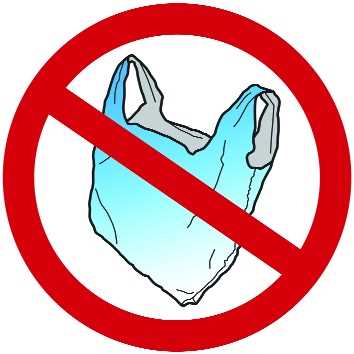In recent years, there has been a growing concern about the environmental impact of plastic bags. As a result, many countries and regions have implemented bans on their use. These bans aim to reduce plastic waste and encourage the use of more sustainable alternatives. However, not all plastic bags are created equal, and it can be confusing to know which ones are prohibited and which ones are still allowed.
One type of plastic bag that is commonly banned is the single-use, thin plastic bag. These bags are typically used for carrying groceries or other lightweight items. They are often made from low-density polyethylene, which does not break down easily and can persist in the environment for hundreds of years. The bans on these bags are designed to encourage consumers to bring their own reusable bags when shopping and to promote the use of more durable and environmentally friendly alternatives.
Another type of plastic bag that is often banned is the plastic bag with handles. These bags are similar to the single-use bags but have an added feature of handles, making them more convenient for carrying. However, the handles pose a potential threat to wildlife, as they can become entangled in them. Additionally, these bags are often made from thicker plastic, which takes longer to break down in the environment and can cause even more harm.
It’s important to note that not all plastic bags are banned everywhere. The regulations and bans vary from country to country and even from region to region. Some countries have implemented partial bans and restrictions, allowing only certain types of plastic bags to be used. For example, some places still allow the use of plastic bags for specific purposes, such as packaging fresh produce or meat. In these cases, the bags may be thicker and more durable, and they may be made from materials that break down more easily.
Overall, the goal of banning plastic bags is to reduce the amount of plastic waste and its impact on the environment. By understanding which types of plastic bags are prohibited, consumers can make more informed choices and opt for reusable alternatives. It’s important to stay updated on the regulations in your area and to explore sustainable options like cloth bags or biodegradable alternatives. Together, we can make a difference in protecting our planet.
- The Problem with Plastic Bags
- Why Plastic Bags Are Being Banned
- Types of Plastic Bags Being Prohibited
- 1. Single-use carryout bags:
- 2. Plastic shopping bags:
- Environmental Impact of Plastic Bags
- Question-Answer:
- Why are plastic bags banned?
- Which countries have banned plastic bags?
- What types of plastic bags are usually banned?
- Are there any alternatives to plastic bags?
- What are the penalties for using banned plastic bags?
- Which types of plastic bags are banned in most places?
The Problem with Plastic Bags
Plastic bags have become a major environmental concern in recent years due to their widespread use and long-term impact on the planet.
One of the main issues with plastic bags is their durability. Although they may be convenient for carrying groceries or other items, plastic bags are designed to last for hundreds of years. This means that even if a plastic bag is used for just a few minutes, it will continue to exist in some form for centuries, slowly breaking down into smaller pieces but never fully decomposing.
This durability leads to a wide range of problems for our ecosystems. Plastic bags frequently end up as litter, polluting our streets, parks, and waterways. They can also pose a threat to wildlife, as animals often mistake them for food or become entangled in them.
The production of plastic bags also takes a toll on natural resources and contributes to greenhouse gas emissions. To create these bags, fossil fuels such as oil or natural gas are extracted and processed, releasing carbon dioxide and other harmful gases into the atmosphere. In addition, plastic bag manufacturing requires a significant amount of water and energy, further straining our already limited resources.
Furthermore, the disposal of plastic bags presents a major challenge. While some may be recycled, many end up in landfills where they can take hundreds of years to break down. Others are incinerated, releasing toxic pollutants into the air.
Recognizing these environmental concerns, many countries and cities around the world have taken steps to ban or restrict the use of plastic bags. By doing so, they hope to reduce litter, protect wildlife, and promote sustainable alternatives such as reusable bags or paper bags.
In conclusion, the problem with plastic bags lies in their durability, their contribution to pollution and greenhouse gas emissions, and the challenges associated with their disposal. By understanding these issues and supporting efforts to reduce plastic bag usage, we can help create a more sustainable and eco-friendly future.
Why Plastic Bags Are Being Banned

Plastic bags have become a significant environmental concern due to their negative impact on ecosystems and human health. The reasons for banning plastic bags include:
- Environmental damage: Plastic bags are non-biodegradable and can persist in the environment for hundreds of years. They can end up in bodies of water, where they harm marine life and contaminate the water.
- Waste management costs: The disposal and recycling of plastic bags require significant resources and often end up costing taxpayers. By banning plastic bags, municipalities can reduce these costs and allocate resources towards more sustainable waste management practices.
- Single-use culture: Plastic bags are typically used once and then thrown away. This single-use culture contributes to the growing problem of plastic waste worldwide. Banning plastic bags encourages consumers to adopt reusable alternatives, such as cloth bags or paper bags.
- Microplastic pollution: Over time, plastic bags break down into smaller pieces called microplastics. These microplastics can be ingested by animals and eventually make their way into the food chain, causing harm to both wildlife and humans.
- Plastic bag litter: Plastic bags are notorious for their role in littering. They can be easily carried by the wind and often end up as unsightly litter in streets, parks, and other public spaces. Banning plastic bags helps reduce this visual pollution and promotes cleaner communities.
Due to these reasons, governments and municipalities around the world are implementing plastic bag bans as part of their efforts to address plastic pollution and promote more sustainable practices.
Types of Plastic Bags Being Prohibited

Many different types of plastic bags are being banned worldwide due to their negative impact on the environment.
1. Single-use carryout bags:

These are the most common type of plastic bags being banned. They are thin, lightweight bags commonly used for carrying groceries or other items. Single-use carryout bags are typically made from high-density polyethylene (HDPE) or low-density polyethylene (LDPE).
2. Plastic shopping bags:
Plastic shopping bags are thin, transparent bags that are commonly used by retailers to package purchased items. These bags are usually made from LDPE or polypropylene (PP) and are often printed with the store’s logo.
3. Ziplock bags:
Ziplock bags, also known as resealable bags or sandwich bags, are popular for storing food and other items. They have a plastic zipper closure that allows for easy opening and closing. Ziplock bags are typically made from LDPE or PP.
4. Produce bags:
Produce bags are very thin, lightweight bags used to package fruits and vegetables in grocery stores. They are usually made from HDPE or LDPE and are often used in large quantities, contributing to plastic waste.
5. Garbage bags:
Garbage bags are thicker and stronger bags used for collecting and disposing of household waste. While they serve a useful purpose, their non-biodegradable nature makes them a contributor to plastic pollution.
6. Disposable food service bags:
These are bags commonly used in restaurants, food stalls, and other food service establishments for takeout orders and food packaging. They are typically made from LDPE or PP and can be found in various sizes.
Banning these types of plastic bags is aimed at reducing litter, protecting wildlife, and promoting more sustainable alternatives. By transitioning to reusable bags or biodegradable alternatives, individuals and businesses can help minimize the environmental impact of plastic bag consumption.
Environmental Impact of Plastic Bags
Plastic bags have a significant negative impact on the environment. Their production requires the extraction of fossil fuels, which contributes to air and water pollution. The extraction of these non-renewable resources leads to habitat destruction and the disruption of ecosystems. Additionally, the manufacturing process itself releases greenhouse gases into the atmosphere, contributing to climate change.
Once used, plastic bags often end up as litter. They are lightweight and can easily be carried by the wind, leading to their accumulation in trees, rivers, and oceans. This not only makes these areas unsightly, but also poses a threat to wildlife. Animals can mistake plastic bags for food, ingesting them and suffering from digestive problems or even death. Marine animals are especially vulnerable, as they can become entangled in plastic bags or mistake them for jellyfish.
Plastic bags also have a long decomposition period. They can take anywhere from 15 to 1000 years to break down in the environment. During this time, they release harmful chemicals, including heavy metals and toxic additives, into the soil and water, further polluting the environment.
Moreover, the recycling of plastic bags is often challenging due to their low value and the lack of proper recycling infrastructure. Many bags end up in landfills instead, where they continue to occupy space and contribute to the production of greenhouse gases as they decompose.
Given these negative environmental impacts, many countries and cities have implemented bans or restrictions on plastic bags to reduce their usage and promote more sustainable alternatives.
Question-Answer:
Why are plastic bags banned?
Plastic bags are banned because they have a negative impact on the environment. They take hundreds of years to decompose and contribute to pollution and overflowing landfills. Additionally, they pose a threat to wildlife, especially marine animals who mistake them for food.
Which countries have banned plastic bags?
Several countries have banned plastic bags, including Kenya, Rwanda, Bangladesh, and China. In Europe, countries such as France, Italy, and Ireland have also implemented bans. Many cities and states in the United States have also prohibited the use of plastic bags.
What types of plastic bags are usually banned?
The types of plastic bags that are usually banned are thin, single-use bags commonly used at grocery stores and retail outlets. These bags are typically made of high-density polyethylene (HDPE) or low-density polyethylene (LDPE) and have a thickness below a certain threshold, usually around 50-75 micrometers.
Are there any alternatives to plastic bags?
Yes, there are many alternatives to plastic bags. Some common alternatives include reusable cloth bags, paper bags, and biodegradable bags made from plant-based materials. Many stores also encourage customers to bring their own bags or offer incentives for using alternatives to plastic.
What are the penalties for using banned plastic bags?
The penalties for using banned plastic bags vary depending on the jurisdiction. In some places, individuals may be fined for using prohibited bags, while businesses can face more severe penalties, such as fines or even closure. It is important to familiarize yourself with the specific laws and regulations in your area to avoid any potential penalties.
Which types of plastic bags are banned in most places?
In most places, thin single-use plastic bags are banned. These include grocery bags, shopping bags, and take-out bags.